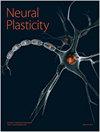Clinical Comparison between HD-tDCS and tDCS for Improving Upper Limb Motor Function: A Randomized, Double-Blinded, Sham-Controlled Trial
IF 3.7
4区 医学
Q2 Medicine
引用次数: 0
Abstract
Background. Stroke is a common and frequently occurring disease among middle-aged and elderly people, with approximately 55%−75% of patients remaining with upper limb dysfunction. How to promote the recovery of motor function at an early stage is crucial to the life of the patient. Objectives. This study aimed to investigate whether high-definition transcranial direct current stimulation (HD-tDCS) of the primary motor cortex (M1) functional area in poststroke patients in the subacute phase is more effective in improving upper limb function than conventional tDCS. Methods. This randomized, sham-controlled clinical trial included 69 patients with subcortical stroke. They were randomly divided into the HD-tDCS, anodal tDCS (a-tDCS), and sham groups. Each group received 20 sessions of stimulation. The patients were assessed using the Action Research Arm Test, Fugl–Meyer score for upper extremities, Motor Function Assessment Scale, and modified Barthel index (MBI) pretreatment and posttreatment. Results. The intragroup comparison scores improved after 4 weeks of treatment. The HD-tDCS group showed a slightly greater, but nonsignificant improvement as compared to a-tDCS group in terms of mean change observed in function of trained items. The MBI score of the HD-tDCS group was maintained up to 8 weeks of follow-up and was higher than that in the a-tDCS group. Conclusion. Both HD-tDCS and a-tDCS can improve upper limb motor function and daily activities of poststroke patients in the subacute stage. This trial is registered with ChiCTR2000031314.HD-tDCS 与 tDCS 在改善上肢运动功能方面的临床比较:随机、双盲、假对照试验
背景。脑卒中是中老年人的常见病和多发病,约 55%-75% 的患者遗留上肢功能障碍。如何尽早促进运动功能的恢复对患者的生活至关重要。研究目的本研究旨在探讨对处于亚急性期的脑卒中后患者的初级运动皮层(M1)功能区进行高清晰度经颅直流电刺激(HD-tDCS)是否比传统的 tDCS 更能有效改善上肢功能。方法。这项随机假对照临床试验包括 69 名皮层下中风患者。他们被随机分为 HD-tDCS、阳极 tDCS(a-tDCS)和假组。每组接受 20 次刺激。患者在治疗前和治疗后均接受了行动研究臂测试、上肢 Fugl-Meyer 评分、运动功能评估量表和改良巴特尔指数(MBI)的评估。结果显示治疗 4 周后,组内比较得分有所提高。与 a-tDCS 组相比,HD-tDCS 组在训练项目功能方面的平均变化略大,但不显著。HD-tDCS 组的 MBI 分数在随访 8 周后仍保持不变,且高于 a-tDCS 组。结论HD-tDCS和a-tDCS均能改善处于亚急性阶段的脑卒中后患者的上肢运动功能和日常活动能力。本试验已在 ChiCTR2000031314 注册。
本文章由计算机程序翻译,如有差异,请以英文原文为准。
求助全文
约1分钟内获得全文
求助全文
来源期刊

Neural Plasticity
Neuroscience-Neurology
CiteScore
5.70
自引率
0.00%
发文量
0
审稿时长
1 months
期刊介绍:
Neural Plasticity is an international, interdisciplinary journal dedicated to the publication of articles related to all aspects of neural plasticity, with special emphasis on its functional significance as reflected in behavior and in psychopathology. Neural Plasticity publishes research and review articles from the entire range of relevant disciplines, including basic neuroscience, behavioral neuroscience, cognitive neuroscience, biological psychology, and biological psychiatry.
 求助内容:
求助内容: 应助结果提醒方式:
应助结果提醒方式:


